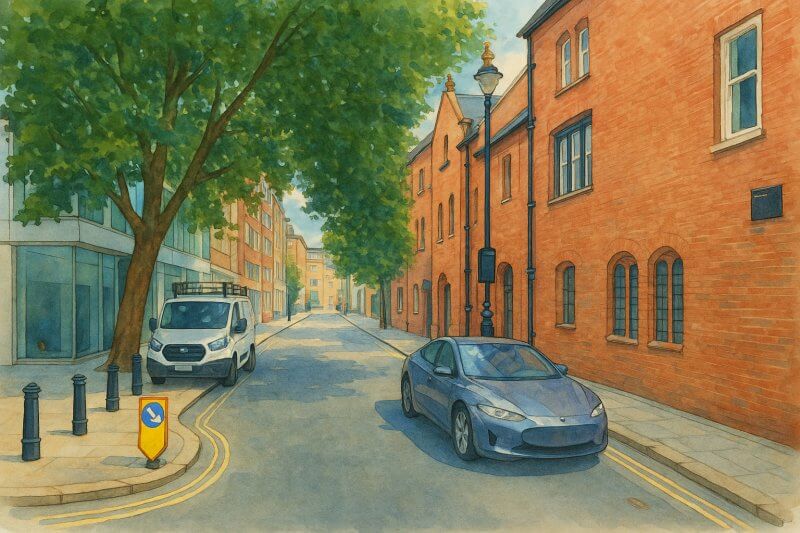
Great Peter Street, London
A Historic Thoroughfare in Westminster
A Hidden Gem in the Heart of Westminster
Great Peter Street may not be as instantly recognizable as some of Westminster’s grand avenues, but it holds its own with quiet charm, a rich history, and a mix of impressive architecture and residential calm.Where Is Great Peter Street Located?
Great Peter Street runs through the heart of Westminster, London SW1.It lies to the south of Victoria Street and north of Horseferry Road, in a prime location close to some of London’s most famous landmarks such as Westminster Abbey, the Houses of Parliament, and St. James’s Park. The street runs in a roughly east-west direction and is part of the historic fabric of central London, offering a peaceful contrast to the busier main roads nearby.
How Long Is Great Peter Street?
Great Peter Street is approximately 0.2 miles (about 350 meters) in length.Despite its modest size, the street carries a strong sense of place and history, linking several important cross streets and hosting a variety of interesting buildings and sites.
The History of Great Peter Street
Great Peter Street dates back to the 17th century, a period of rapid expansion in Westminster.Originally part of the marshy area known as Tothill Fields, the land was gradually drained and developed during the early Stuart period.
By the mid-1600s, the street had become established as a thoroughfare in the growing urban landscape surrounding Westminster Abbey and the Royal Court.
The development of Great Peter Street was part of a broader movement to create formal streets and residential blocks to accommodate government officials, clergy, and those associated with the royal household.
Over the centuries, the street evolved, with Victorian-era buildings replacing some of the earlier structures, though traces of the street’s older past still linger in its layout and atmosphere.
Map of Great Peter Street, London
How Did Great Peter Street Get Its Name?
Great Peter Street was named after St. Peter, the patron saint of Westminster Abbey.The street’s name dates back to at least the 17th century, reflecting the dominant religious and political influence of Westminster Abbey in the area.
The "Great" in the name likely served to distinguish it from nearby Little Peter Street (now absorbed into modern-day Horseferry Road) and to reflect its status as a larger, more significant road.
Streets that connect to Great Peter Street
- Chadwick Street
- Cowley Street
- Gayfere Street
- Great Smith Street
- Greycoat Place
- Horseferry Road
- Little Cottage Street
- Lord North Street
- Marsham Street
- Millbank
- Perkin's Rents
- St Ann's Street
- St Matthew Street
- Tufton Street
Major Buildings and Character of the Street
Great Peter Street is a blend of residential and institutional character, with some light commercial presence.Notable buildings along the street include:
- St. Matthew’s Church: A striking Victorian Gothic church built in the late 19th century by architect Sir George Gilbert Scott, known for its ornate brickwork and beautiful interior.
- Government Offices: Various administrative buildings connected to UK government departments are located nearby, reflecting Westminster’s official character.
- Residential Developments: A mix of historic apartment buildings and modern flats line the street, giving it a genteel, lived-in feel.
As of 2025, property prices here are approximately 30-40% higher than the citywide median, with flats often priced above £1 million and larger residences commanding several million pounds.
The area is highly sought after for its proximity to Parliament, prestigious schools, and green spaces like St. James’s Park.
Overall, Great Peter Street retains a quiet, almost village-like atmosphere, predominantly residential with pockets of office and church buildings, making it quite distinct from Westminster’s busier thoroughfares.

Painting of Great Peter Street (View full-size image here)
Nearest London Underground Stations
Great Peter Street is well served by several nearby London Underground stations:- St. James’s Park Station: Located about a 7-minute walk north, served by the Circle and District lines.
- Victoria Station: About a 12-minute walk west, offering access to the Victoria, Circle, and District lines, along with National Rail services.
- Westminster Station: Roughly a 10-minute walk to the east, served by the Jubilee, Circle, and District lines.
Fun Facts About Great Peter Street
One interesting fact about Great Peter Street is its historical association with some notable 19th-century reformers and politicians who lived nearby, working within the ministries housed around Westminster.Another quirky feature is that some parts of Great Peter Street were once laid out atop former medieval ponds and marshland that surrounded the old Westminster Abbey precincts.
Today, although the landscape has been completely urbanized, historical maps show how much the area has changed from a watery, undeveloped expanse to a structured part of metropolitan London.
Another tidbit: tucked into nearby Strutton Ground, just steps from Great Peter Street, is one of Westminster’s oldest street markets, dating back to the 17th century and still bustling today with food stalls and traders.
Conclusion
Great Peter Street may not shout for attention like Westminster’s larger avenues, but it offers a fascinating glimpse into the quieter, historic side of the city.With its blend of stately architecture, historic connections, and peaceful charm, it remains one of Westminster’s best-kept secrets — perfect for those who appreciate London's quieter nooks steeped in centuries of history.